
table of contents
- Perennials
- trees and shrubs
- Ground cover
- Cacti and succulents
- Herbs
- Grasses
- frequently asked Questions
A barren soil does not have to do without plants. There are a number of plants that prefer poor soils and poor soils. We present 45 of these plants to you in this article.
In a nutshell
- barren soils are poor in nutrients
- can be acidic and dry
- often well drained or sandy
- Mediterranean plants are well suited
Perennials
1. Alpine edelweiss (Leontopodium nivale)
- 5 to 20 cm high
- blooms from July to the end of September
- pure white flower
- prefers sunny locations without shade
- barren, calcareous soils are ideal
- well suited for hillside planting

2. Arnica (arnica montana)
- 20 to 60 cm high perennial
- Flowering period from mid-May to mid-August
- Tubular flowers of yellow color
- suitable for sunny to partially shaded locations
- is sensitive to lime
- Medicinal plant
- Caution: flowers are poisonous

3. Mountain Mint (Calamintha nepeta)
- 30 to 80 cm high
- blooms from July to the end of September
- zygomorphic flowers in white or light purple
- sunny locations are preferred
- smells strong
- ideal for rock gardens

4. Common ormennig (Agrimonia eupatoria)
- grows up to 180 cm high
- blooms in yellow from mid-June to September
- fivefold and radial symmetry
- choose sunny to partially shaded locations
- chalk-loving
- Medicinal and dye plant
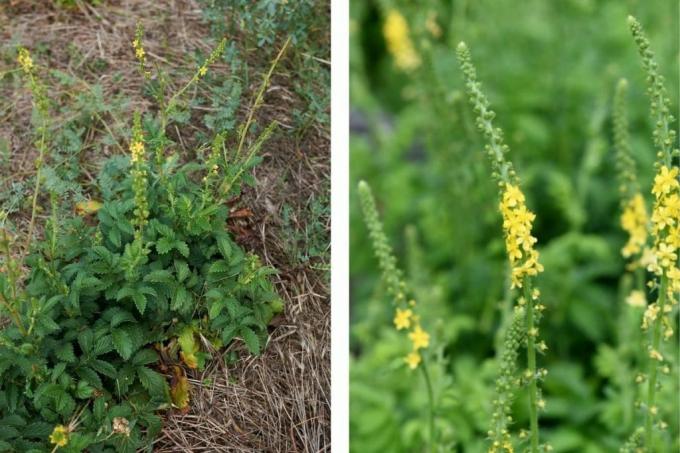
5. Common Pechnelke (Silene viscaria)
- between 30 and 90 cm high
- flowers pink or purple from May to July
- Inflorescences and stems sticky
- a location in full sun is ideal
- avoiding lime
- is considered endangered in some federal states

6. Gorse (genista)
- Shrubs between 50 and 200 cm high
- yellow butterfly flowers from April to the end of June
- more rarely in white, pink, red or purple
- The location should be sunny
- warm places are ideal
- Uses: dye plant, perfume production, folk medicine

7. Helmet orchid (Orchis militaris)
- between 20 and 60 cm high
- Flowering period from the end of April to the end of June
- Inflorescence with up to 50 white-pink flowers
- sunny to shady location
- endangered
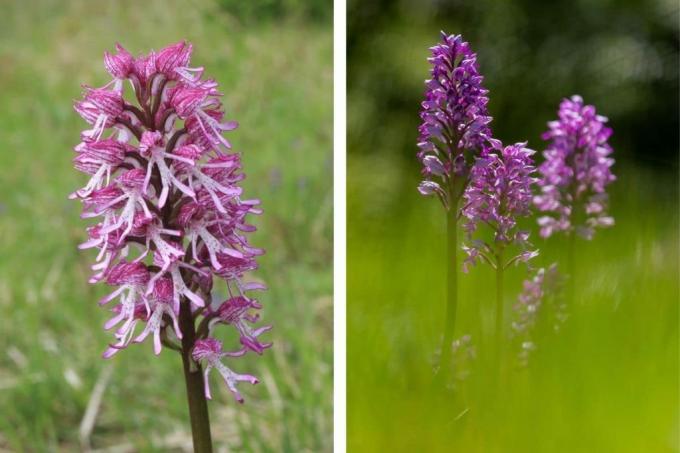
8. Carthusian Carnation (Dianthus carthusianorum)
- 15 to 50 cm high
- up to 15 flowers per inflorescence
- purple flowers, five-fold, radial symmetry
- sunny and warm location preferred
- ideal for sand and rock gardens
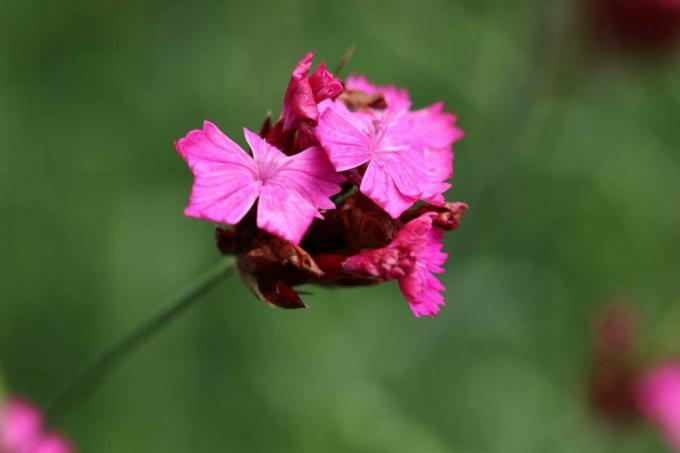
9. Sharp buttercup (Ranunculus acris)
- grows upright 30 to 100 cm
- flowers from May to mid-September
- golden yellow, radial symmetry flowers
- prefers sunny to partially shaded spots
- in all parts of the plant poisonous

10. Meadow Marguerite (Leucanthemum vulgare)
- Perennials with a height of 30 to 60 cm
- flowers from mid-May to mid-September
- four to six cm large flowers, petals colored white, golden-yellow tubular flowers
- sunny to partially shaded locations are ideal
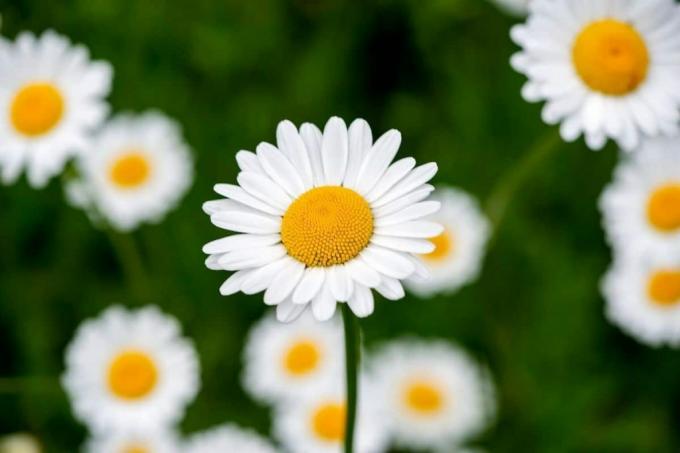
trees and shrubs
1. Apple rose (Rosa villosa)
- Shrubs up to two meters in height
- armed with spikes
- Flowering time from the beginning of June to the end of July
- up to three flowers per umbel
- white, pink or crimson
- prefers sunny locations, shady and partially shaded locations are tolerated
- undemanding
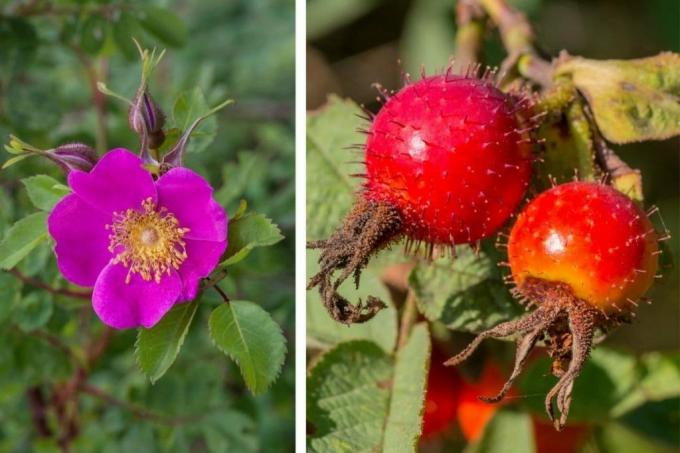
2. Common Juniper (Juniperus communis)
- Shrubs or trees up to 12 meters high
- forms needles
- berries develop after two to three years
- Harvest time from August to mid-September
- Use as a spice or to make alcohol
- sunny to partially shaded locations recommended

3. Silver birch (Betula pendula)
- 15 to 30 meters high
- characteristic white bark
- flowers from April to May
- ideal for sunny locations
- undemanding
- Solitary tree
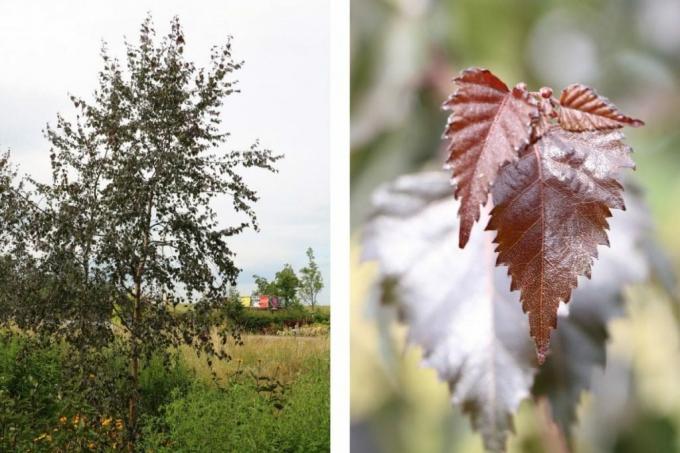
4. Cornelian cherry (Cornus mas)
- four to eight meter high shrub or small tree
- flowers golden yellow from March to mid-April
- important pollinator
- forms edible fruits
- Harvest time from late August to mid-October
- prefers sunny locations, tolerates partial shade
- undemanding
- suitable as a hedge

5. Black Mulberry Tree (Morus nigra)
- up to 12 meters high
- flowers in catkins from May to mid-June
- forms edible, black fruits
- Harvest time from late May to mid-September
- The location should be sunny, sheltered and warm

6. Buddleia (Buddleja davidii)
- 0.5 to five feet tall
- Flowering time from July to the end of September
- up to 30 cm long grape flowers in white, pink, purple-red, blue-violet, violet
- Flowers smell of honey
- prefers sunny and warm locations
- well tolerated by heat
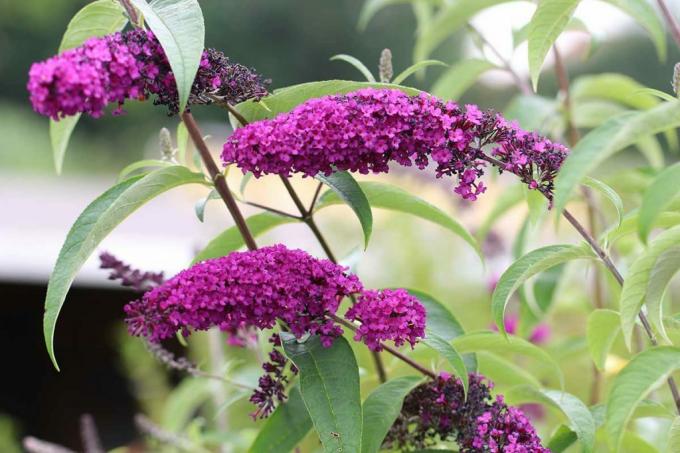
7. Holly (Ilex aquifolium)
- two to 25 meter high shrub or tree
- flowers from May to the first week of June
- small, inconspicuous flowers
- forms berries
- Location shady to shady
- A nutrient-rich to barren soil is suitable
- Leaves and berries slightly poisonous

Ground cover
1. African ring basket (Anacyclus depressus)
- 15 to 25 cm high, rosette growth
- blooms from May to June
- Flowers resemble daisies
- a location in full sun is ideal
- well suited for rock gardens

2. Mountain Sandwort (Arenaria montana)
- 10 to 30 cm tall and prostrate
- blooms from February to mid-May
- white, radial symmetry flowers
- prefers sunny locations
- well suited for Mediterranean or rock gardens

3. Blue-green prickly nuts (Acaena buchananii)
- 20 to 30 cm high ground cover
- lush growth with blue-green foliage
- inconspicuous flowers from June to July
- forms yellow-red to red-brown nuts with spikes
- sunny location
- for open spaces and rock gardens

4. Speedwell (Veronica)
- 20 to 30 cm higher
- lush growth with blue-green foliage
- Pollinator plant
- sunny to partially shaded location
- undemanding
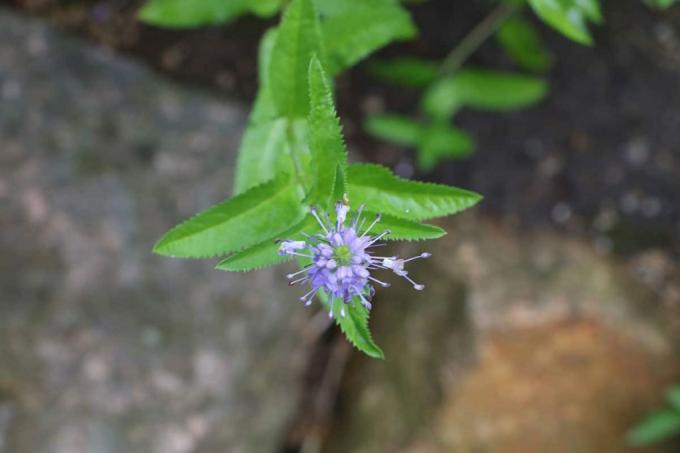
5. Spicy stonecrop (Sedum acre)
- up to 10 cm high
- grows creeping
- blooms from June to mid-July in yellow umbellate flowers
- Choose full sun, dry locations
- suitable for wall planting and other stone structures
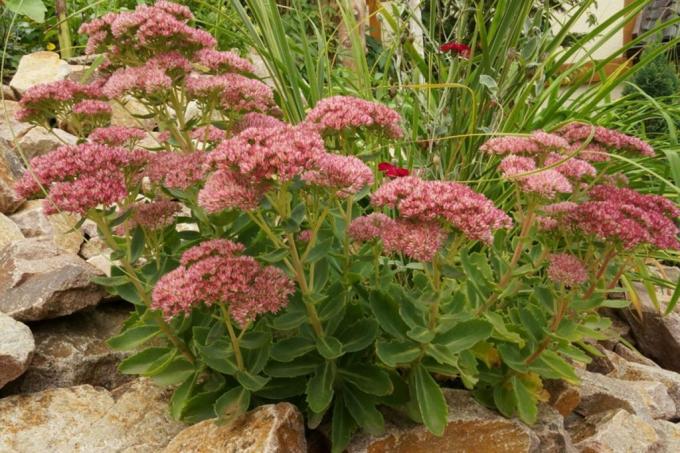
6. Beach silver herb (Lobularia maritima)
- up to 40 cm high
- blooms from July to early December
- white flowers, very fragrant
- sunny to partially shaded location
- Pollinator plant

Cacti and succulents
1. Agaves (agave)
- up to 12 meters high (depending on the species)
- Rosette plants with succulent leaves
- rarely bloom in Central Europe
- Sunny and warm location
- slightly poisonous medicinal plant
- hardy to -10 ° C

2. Real aloe (aloe vera)
- 40 to 60 cm high
- up to 16 succulent leaves
- older leaves contain usable gel
- sunny and warm location
- not hardy

3. Hauswurzen (Sempervivum)
- 0.5 to 60 cm high
- grows as a succulent eyrie
- bloom from the end of May to August (flowers vary according to type)
- sunny, warm and dry location
- hardy
- ideal rock garden plant
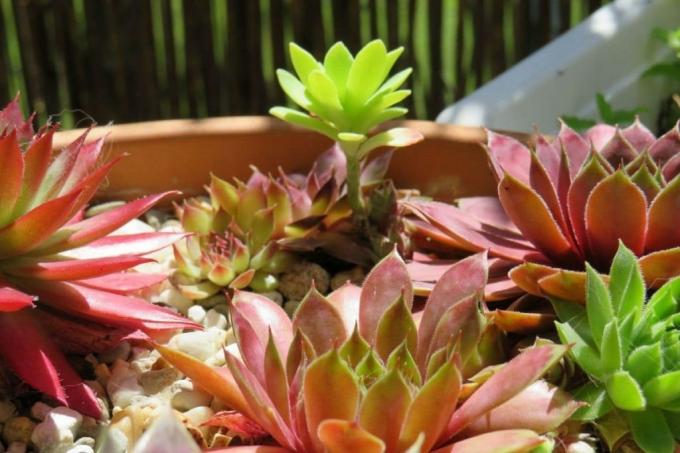
4. Hedgehog Cactus (Echinocereus)
- up to 20 cm high cacti
- blooms red with happiness in spring
- warm and sunny location
- barren soil with a high mineral content is ideal
- not hardy

5. Living stones (Lithops)
- three to 10 cm high
- resemble stones
- flowers with luck from September to November
- full sun and warm location
- not hardy
- ideal for rock gardens

6. Christmas cactus (Schlumbergera)
- 20 to 50 cm high
- hanging growth, provided with bristles, leaves articulated
- blooms from November to January
- Flowers colored white, pink or red
- bright and warm location without direct sunlight
- no cactus despite the name

7. Hardy prickly pear (Opuntia phaeacantha)
- Height from ten to 40 cm
- rich green succulent plant
- armed with thorns
- sunny and sheltered location
- ideal in front of south walls
- hardy
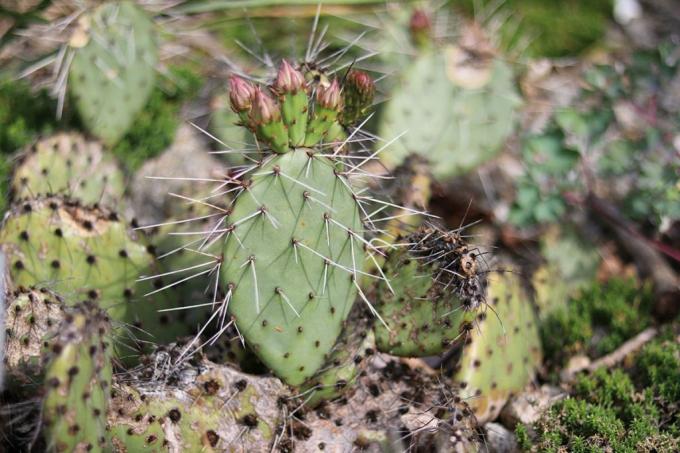
Note: Make sure that the succulents have good winter protection. In many regions, despite a possible winter hardiness, they are dependent on additional protective measures.
Herbs
1. Mugwort (Artemisia vulgaris)
- 60 to 200 cm high
- Harvest time from July to mid-October
- sunny location
- undemanding
- as a herb or therapeutically usable

2. Curry herb (Helichrysum italicum)
- 20 to 60 cm high
- can be harvested all year round
- Leaves smell of curry
- sunny, warm and dry location
- undemanding
- Leaves are used as a spice

Lavender (Lavandula angustifolia)
- up to a meter high
- Flowering period from June to the end of August
- up to eight cm long, purple ears in purple
- is harvested during the flowering period
- sunny and warm location
- suitable for food and perfume production

4. Laurel (Laurus nobilis)
- up to ten meters high
- Harvest the aromatic leaves in spring or autumn
- prefers sunny locations, tolerates partial shade
- should be sheltered from the wind and warm
- Leaves are used as a spice
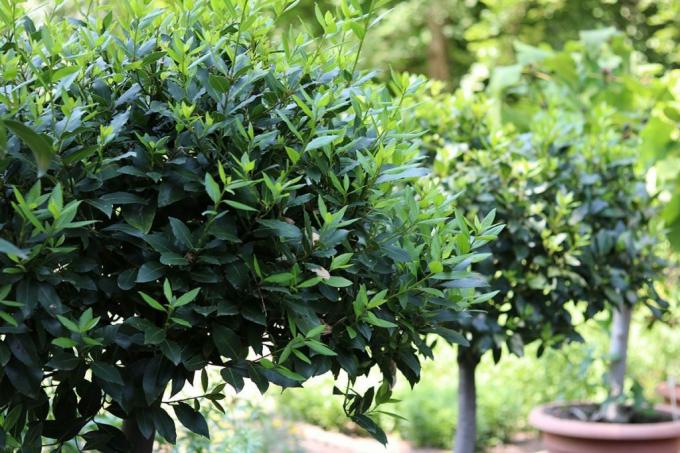
5. Oregano (Origanum vulgare)
- 20 to 70 cm high
- Leaves smell aromatic
- Harvest time over growing season
- sunny and warm location
- Aromatic plant

6. Rosemary (Salvia rosmarinus)
- 50 to 200 cm high
- smells intensely aromatic
- Harvest time over growing season
- prefers sunny and warm locations
- Spice and medicinal plant

7. Sage (Salvia officinalis)
- up to 60 cm high
- leaves with aromatic scent, hairy
- ideal harvest time from late May to mid-August
- sunny, warm and sheltered location
- suitable for gravel beds and rock gardens

8. Thyme (thymus)
- up to 40 cm high
- Harvest time shortly before flowering time (depending on the species)
- soothing scent
- sunny and sheltered location
- ideal for sandy soils

Tip: You can even plant Mediterranean herbs in stone soils, as they are well-drained and protect against waterlogging. They also store sufficient heat, which has a positive effect on the vitality of the herbs.
Grasses
1. American dune grass (Ammophila breviligulata)
- 100 to 140 cm high, 30 to 50 cm wide
- gray-green stalks
- gray-white ears from August to mid-October
- sunny location
- well suited for windy corners
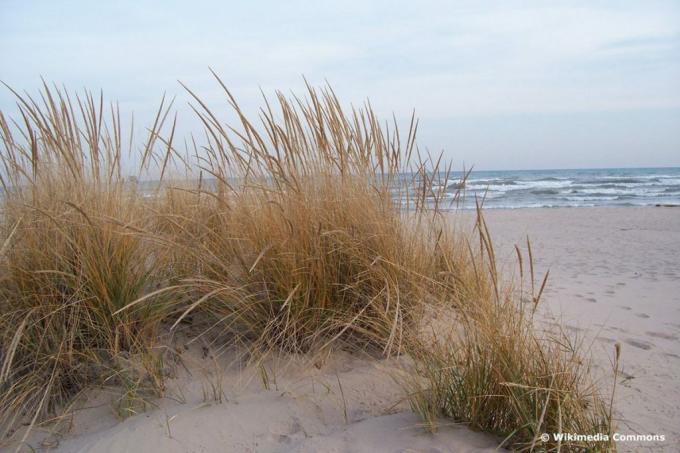
2. Mountain Trespe (Bromus erectus)
- Grasses with a height of 40 to 100 cm
- yellow to gray-green colored stalks
- flowers from June to mid-July in red or purple panicles
- sunny and warm locations are preferred
- ideal for grasslands and slopes

3. Blue-green Schillergrass (Koeleria glauca)
- Height from 15 to 40 cm
- blue-green stalks
- gray-green panicles from June to the end of July
- locations in full sun are ideal
- a permeable, barren soil is recommended
- suitable for borders and rock gardens
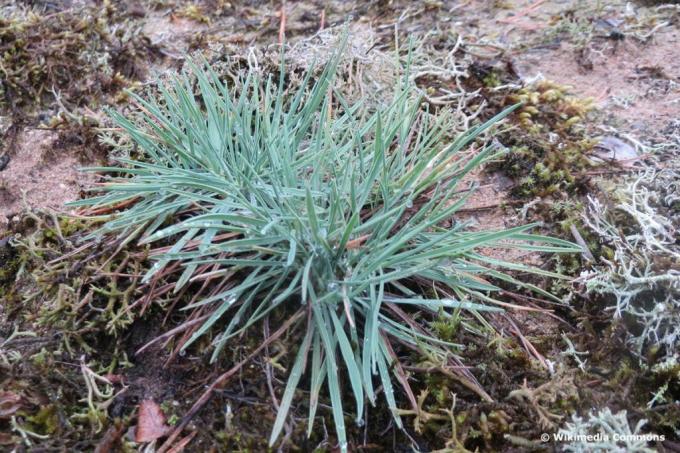
4. Blue fescue (Festuca glauca)
- forms cushions with a height of 25 cm
- blue-gray colored stalks
- blooms from June to July with yellow-brown panicle flowers
- dry and sunny locations are preferred
- barren soil significantly improves vitality

5. Feather grass (Stipa)
- 25 to 200 cm high (depending on the species)
- stalks of intense green color
- preferred sunny locations with plenty of space
- heat resistant
- excellent rock garden plants

6. Beach rye (Leymus arenarius)
- 100 to 130 cm high and up to 200 cm wide
- Culms in blue-gray color
- flowers in yellow-green spikes from June to the end of July
- sunny locations are ideal
- eager to grow with foothills

7. Trembling grasses (Briza)
- 10 to 40 cm high and wide
- deep green colored stalks
- green-brown panicle flowers from May to mid-August
- Flowers tremble when moved
- The location should be sunny
- ideal greenery for open spaces

frequently asked Questions
Most of the plants in the list are species and genera that are sensitive to excessive moisture. That said, you should make sure that the soil stays well drained and that you don't water too much. For plants that need a little more moisture, consider mulching. This prevents the soil from losing water too quickly.
In most cases, barren soils are acidic. For this reason, for some of the plants featured, it is important to improve the pH of the soil before planting. The best way to do this is to use lime, which you distribute in the required quantities. Optionally, you can pour more hard water until the pH value has improved.
If you have the Improve the soil permanently want to plant vegetables, for example, you can mix in ripe compost and quartz sand. To do this, dig up the soil well before enriching the excavated earth. If this method is not enough, you can rely on a soil replacement. The time and cost required for this variant is significantly higher.



